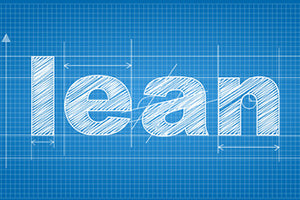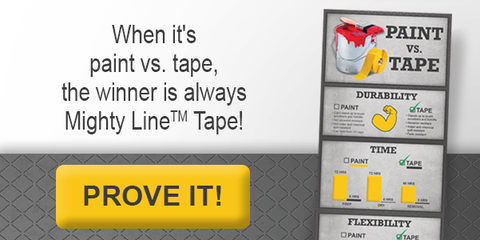Make Your Plant Lean with Mighty Line
 At its core, the lean concept maximizes customer value while minimizing waste. Although the term was coined to describe Toyota’s vehicle manufacturing, lean can and is used in warehouses, healthcare, fast food, and other businesses.
At its core, the lean concept maximizes customer value while minimizing waste. Although the term was coined to describe Toyota’s vehicle manufacturing, lean can and is used in warehouses, healthcare, fast food, and other businesses.
7 steps to initiate lean are:
1. Training
All members of the organization should not only be trained how to implement lean, they should be trained how lean benefits them and the organization. Lean does not work without incentive. Like every process involved in lean, this step must be standardized and ongoing to get results.
2. 5S Implementation
5S is a methodology that supports the lean concept. Put simply, lean is a way of thinking, while 5S provides the building blocks. 5S utilizes organization to minimize waste and increase efficiency. It is usually the first step businesses take toward lean.
By implementing 5S, plants usually gain free space, and workers are able to find parts, equipment and everything needed to perform their jobs quicker and easier.
The implementation of 5S is usually the quickest and easiest way for a business to show lean results. The quickest and easiest method of demonstrating the benefits of 5S is implementing the visual workplace so employees can quickly and easily see which items are where.
And the quickest and easiest method of implementing 5S and the visual workplace is through marking where materials, products, parts, and machinery are or should be located using Mighty LineTM floor tape because of the speed and ease of application.
3. Waste Elimination
The 7 types of waste are:
- Overproduction
- Unnecessary Motion
- Inventory
- Production of Defects
- Waiting
- Transportation
- Overprocessing
Just as improvement is an ever-changing process, so is the identification and reduction of waste. To encourage workers, it’s important to document and point out where waste has been eliminated.
4. Work Standardization
By standardizing work processes and procedures, you can discover and eliminate waste. This is just as important in warehouses, manufacturing plants, hospitals, and fast food restaurants.
5. Kanban
A kanban is a small card that moves with the product or material to signal when product is to be built or when material can be moved. There are two types of kanbans:
Generic kanbans are not tied to a specific product. They signal when to move material or build product, as well as the quantity required. Generic kanbans are divided into two types: production and move. Production kanbans tell you to build, compared to move kanbans, which tell you to move something or go somewhere.
Brand kanbans specifically identify what to build or move or what service action to take, when to build it or take action and the quantity or time required. Action is initiated by production kanbans. After production, move kanbans will determine how many of the item should be moved somewhere.
Adjusting the kanban system to a service business is somewhat tricky. However, if you consider the service the product or material, the quantity the time required, and the build or production the act of working, the system makes sense. For example, in a hospital, your chart moves everywhere with you.
6. Production Leveling
Production leveling ensures there will be sufficient work every day for every worker. No worker should be standing around or overworked. This, of course, is easier recommended than accomplished.
Leveling can be accomplished by volume or type, depending on the type of industry. Reducing changeover time and making changeovers more efficient are key in this process.
7. Just In Time Production
This is sometimes a difficult concept for American businesses, which are accustomed to stockpiling. The auto industry was notorious for it. Equally wasteful results occurred when one line would produce too many products, resulting in another line having insufficient parts to produce enough of their products. Building the correct quantity of the correct product at the optimal time reduces waste.
Again, this is easily translated to the service industry, where an action at the optimal time may prevent having to redo things at a later date.


